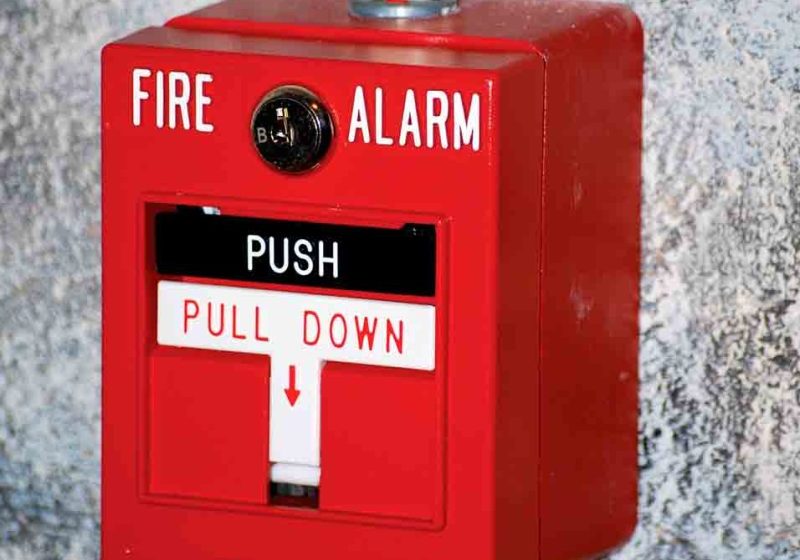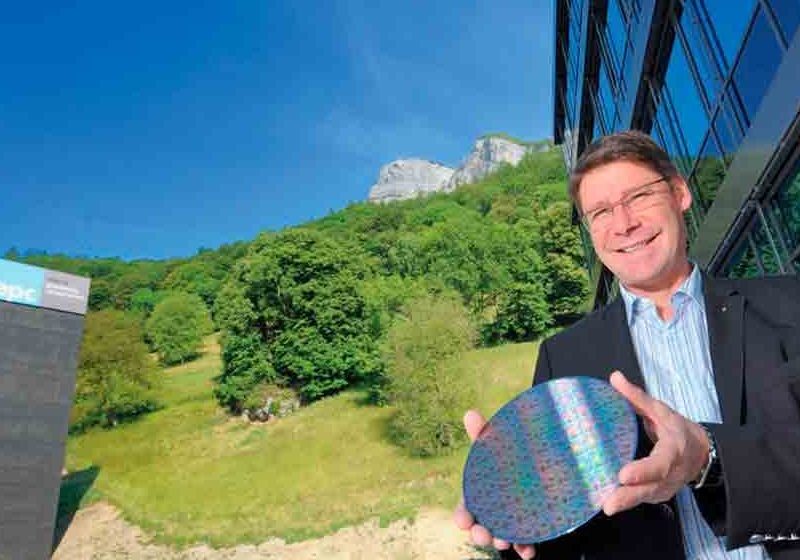A look at the advantages of placing intelligent building-management systems in control of car operations
A Return to the Past
One hundred years ago, the supervisors and attendants of elevator groups in the first tall buildings were well aware of the activities in these buildings. During periods of heavy traffic, they coordinated car operations to reduce the number of stops, i.e., the round-trip times of cars, to increase up/down transport capacities. By assigning up-traveling passengers with the same destination to a specific car, up trips became shorter. By assigning down calls to specific cars, down trip times were reduced as well. Human intelligence and experience, verbal communication, and signal controls of the period assured efficient performance. Later, intercom systems improved their coordination.
Building managers used elevator attendants to control groups. This was a practical and sound solution because attendants were aware of traffic conditions and trends. They knew the destinations of passengers, the best solutions for momentary traffic conditions, and could communicate these solutions to passengers.
Although elevator technology is responsible for moving cars and doors, the coordination of car operations, i.e., the assignment of passengers to specific cars, is a separate problem. The essence of this problem is communication between individual passengers and intelligent control systems. Attendants and destination entry panels giving instructions to passengers were good solutions, but mobile phones that enable direct communication with each passenger may be the ultimate solution. The best solution should be available to all groups and can be achieved by turning-over control of car operations to intelligent building-management systems. Alternatively, intelligent elevator group controls can adopt building management functions.
When automatic controls replaced signal controls, about 60 years ago, supervisors and attendants were abolished. Subsequently the efficiency and service qualities of groups were substantially reduced. Since then, traditional groups with up/down buttons at landings and floor buttons in cars, were controlled by the random destinations of passengers. This loss of control implies the efficiency of traditional groups is worst when needed most, i.e., during heaviest traffic.
Destination Controls for Groups of Elevators
The first group with destination control was installed in Sydney in the late 1960s. It failed due to inadequate relay technology. The reintroduction of destination group controls with modern technology, about 25 years ago, proved successful. Currently, it is the most popular group control system. These systems require passengers to enter their destination on lobby control panels. The control responds by assigning each passenger to a specific car. The essential difference with traditional groups is the absence of floor buttons in cars.
Unfortunately, until now, the theoretical performance potential of groups was unknown. For this reason, the current generation of destination group controls uses algorithms and simulation systems for control purposes. These controls are reactive, but not proactive or intelligent. Consequently, existing destination group controls cannot deliver or guarantee best possible performance under all traffic conditions. The insecurity in respect to group performance has caused elevator companies to create their own proprietary destination group controls; each of which claims to be the best solution.
The discovery of the inherent relativity of up/down transport capacities, time-dependent service qualities, and the space and energy requirements of groups has enabled the design of intelligent destination group control systems. These controls enable the best possible performance of any group under all traffic conditions. An earlier article, “The Planning and Performance of Groups of Elevators” (ELEVATOR WORLD, October 2011) disclosed that intelligent controls can improve the efficiency of four-car groups by 25%. For six-car groups, the improvement potential is even higher. This article and a book of the same title can be read or downloaded at website: www.elevatorgroupcontrols.com.
Learning Abilities
Intelligent destination group controls generate a wide range of data, because they permanently monitor and analyze car operations, carloads, service calls and other data. These systems and their learning abilities provide patterns for up and down traffic densities, service calls, floor populations and further data for the specific building or zone served by a group. This knowhow, or artificial experience, is utilized to anticipate traffic conditions and to provide the best possible response to each service call for momentary traffic conditions.
The data disclosed by learning systems may also be of interest to building managers and tenants. Consequently, it is advantageous to integrate intelligent destination controls and their learning functions in intelligent building management systems.
Direct Communication Systems
An essential feature of intelligent building management systems is direct communication between users and management systems. Although a direct-communication system can be integrated in any elevator group control, the logical place for such a system is the building management system. This system architecture has many advantages.
Direct communication can be realized using mobile phones that automatically contact the building management system when a user enters the building. The control may inform the user, “Car ‘E’ will depart for floor 14 in 11 seconds.” The user may cancel this assignment by registering another destination. He or she will immediately receive updated instructions. Visitors will be required to check in at a reception or security desk to state their purpose and be equipped with a mobile device that allows access to specific floors. Alternatively, a visitor’s mobile phone may be programmed to permit the use of elevators. If a visitor leaves a car on a restricted floor, he or she and security will be automatically informed. Access to a limited number of floors may apply for both visitors and building users. Access restrictions may also apply for defined time periods.
Direct communication implies that the building management system can monitor the fluctuating population of each floor. These data will also be of interest to tenants interested in viewing the flow of personnel and visitors. Floor population data may also be of interest to the air-conditioning system or could reduce lighting in certain areas when a floor is empty. Population and traffic density patterns of individual floors will be of interest when rentals are reviewed. A reduction of traffic peaks may be achieved if tenant working hours are discussed with relevant floor population and traffic density data. Although the attendants of the past must have been an interesting source of information for building managers, it is obvious that intelligent building management systems are capable of much more.
Improved Group Efficiency
Direct communication implies that the building management system has, at all times, complete data in respect to transportation demands, i.e., momentary traffic conditions. The momentary traffic density to and from each floor, and the number of waiting passengers on each floor and their destinations are known at all times. The waiting- and travel time in the car of each passenger, and the time to destination (the sum of waiting and travel times) will be recorded. These data can be analyzed and evaluated for any traffic period. This implies that traffic density patterns and other data of the building that is served by a specific group will be accurate. It also means that buildings can be “intelligent,” i.e., have the knowhow of momentary and anticipated traffic conditions, and the ability to communicate to passengers which car ensures the earliest possible arrival at their destination.
Down-traveling passengers waiting on a high floor may be assigned an up-traveling car stopping on that floor, because it is scheduled soon for reversal. This will save another car, or the car concerned, from making a stop on this floor during the down trip. Likewise, an up-traveling passenger on a lower floor may be assigned to a down-traveling car making a stop on that floor, because it is assigned to serve the passenger’s destination after reversal on floor zero. If a passenger enters an unassigned car by mistake, the assignment of this passenger to another car is automatically canceled. The passenger concerned will be advised what to do next. Your author expects that direct communication will contribute an additional efficiency improvement of approximately 10%.
Building Security
A problem for tall buildings is security, which may be improved with direct communication. During an emergency a building manager may inform the population of a concerned floor(s) of a dangerous situation. If a visitor leaves an assigned car on an unauthorized floor, the passenger and security will be informed automatically. Security can make contact with the passenger immediately and follow his or her movements. If a visitor has borrowed a mobile device from the security desk and does not return it, he or she may be stopped before leaving the building.
Evaluation of Group Performance
It is possible to make exact comparisons of service qualities of different types and/or brands of group controls. The method for making comparisons is traffic simulation on the basis of identical traffic lists. This implies that better performance of groups with intelligent destination controls can be proven independently from the mathematical systems and logic published on the previously mentioned website.
Group Planning
Intelligent destination groups will make the planning of group configurations and group service qualities an exact exercise. Mutually agreed service qualities can be contractually guaranteed. The continuous monitoring of all group service qualities enables building managers to check compliance with contractually guaranteed data.
Intelligent Buildings
Future buildings will be intelligent and have many new features, including better elevator service qualities. Their groups of elevators will usually consist of five or six cars with much lower contract loads. The positioning of hoistways can be in a single line or opposite each other. In comparison with existing groups, these configurations will substantially reduce waiting and travel times in the cars.
Passengers will be relaxed because there is no need to register a destination at a lobby panel and take note of the assigned car. Passengers walk directly to the assigned car and know the time of its departure. In comparison to existing groups, service frequencies will be up to 100% higher for six-car groups. This means the number of passengers in cars and waiting for cars will be lower. Most of the time, elevator service will be comparable to taxi service with few passengers in each car going to even fewer destinations. During traffic peaks, cars will not get too full because control of the permitted number of stops includes control of carloads.
Increasing traffic densities require a reduction of the permitted numbers of up and down stops to increase transport capacities. This implies that waiting times increase, but travel times in the cars are reduced. It is an inherent feature of intelligent controls that the reduction of the average travel time in the car exceeds the average waiting time increase. The average time to destinations for passengers is thus reduced. This feature could be contractually guaranteed for the range of traffic densities that form the basis of the plans and assumptions for a specific building.
The service qualities of existing groups can be substantially improved by modernization with intelligent controls. The service quality improvements and energy savings can be demonstrated before a modernization order is placed. These improvements and savings could be contractually guaranteed.
All features mentioned are based on the learning abilities of intelligent controls. A group of elevators that does not know the traffic patterns and floor populations of the building served by a specific group cannot make intelligent control decisions. If 100 years ago groups were operated by different attendants each day, the attendants could not have done a good job.
When destination group controls were introduced in the late 1980s, modernization of existing buildings accelerated the worldwide acceptance of these controls. Modernization of existing buildings with intelligent controls may well have the same effect.
Get more of Elevator World. Sign up for our free e-newsletter.








